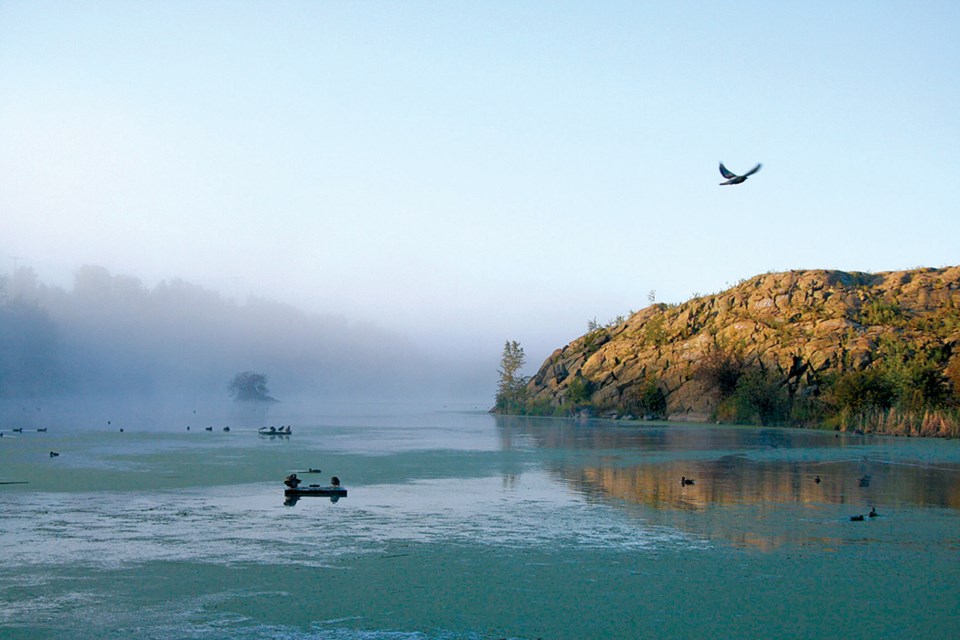The president of Travel Manitoba has a message for Flin Flon: Tourism is everybody’s business.
Colin Ferguson, president and CEO of Travel Manitoba took to the stage during the Infusion Entrepreneurship Conference on Oct. 25 to discuss the $1.5 billion industry in Manitoba.
“It’s a lot bigger than people would give it credit for,” said Ferguson.
“Our goal is to increase that to $2 billion annually by 2020.”
For about a decade, Manitoba had the least funded provincial marketing organization in the country, operating on about $7.5 million, while neighbouring Saskatchewan operated on about $16 million. The big four – British Columbia, Alberta, Ontario and Quebec – had provincial marketing budgets of about $70 to $100 million. Something needed to change if the province’s industry was going to keep up with the rest of the country.
“The first thing we needed to do was build a brand that made us competitive with everybody, and we needed to stand up against Newfoundland and BC. The result was our Canada’s Heart Beats campaign,” said Ferguson.
“I knew what we needed, I knew what we were looking for. That campaign has been hugely successful, so much so that it is now actually – and not all the time, but at times – beating British Columbia, beating Newfoundland in international marketing competitions, which is really flattering.”
With the campaign seeing success, Travel Manitoba also needed money. The organization developed a plan in which 96 per cent of the tax based revenues generated by the tourism industry stays with the provincial government, and the remaining four percent of that revenue goes to Travel Manitoba and is then used to keep marketing the province.
“We saw an immediate lift of $3.4 million year one, which is pretty substantial, at a time when cuts were being made everywhere else,” said Ferguson.
“But that $3.4 million in new money is already showing a 10 to one investment return. While we are still tenth in terms of provincial funding, we are starting to catch some of the others. Every year we have big increases, we get an increase. That first $3.4 million has generated $38 million in tax-based revenues to the provincial government. Tourism is actually making a difference.”
Ferguson said the Canada’s Heart Beats campaign has changed the way people view Manitoba as a travel destination, as well as how Manitobans view themselves.
“It is instilling a pride factor in Manitobans to change the way we actually feel about ourselves,” he said.
Travel Manitoba is actively working with northern Manitoba with its northern tourism strategy as part of the Look North initiative. Part of the focus on the north includes hiring a brand new northern-based position.
“It’s never been done before – this is a pilot project that’s being tested in the north,” said Ferguson, who sees enormous potential north of 53.
“Manitoba is blessed with some very unique product … there’s nobody else in the world that can compete with our polar bear viewing, our beluga whales – they are spectacular. Northern lights is a brand new product for us that we’re promoting, and that’s north of 53 … Manitoba would be in the top three places in the world to see the northern lights,” said Ferguson, adding that the province’s hunting and fishing markets are second to none.
Ferguson sees opportunity for tourism in and around Flin Flon, not just in the fishing and hunting market, but when the snow flies, as well.
“It is such a cool place … the impression of Flin Flon in Winnipeg and the impression of most northern communities is they’re rough and tumble, scarred by mining – they’re not pretty. Well, Flin Flon is a postcard,” he said.
“It’s absolutely gorgeous and it’s everywhere. It’s beautifully treed and the housing is well priced and the lakes are spectacular and easily accessible. It’s a winter paradise here for snowmobiling and ice fishing and cross-country skiing.”
Ferguson said winter activities are particularly appealing to millenials who are embracing the cold rather than trying to escape it as the baby boomer generation has typically done.
One of the ways Travel Manitoba is helping communities bolster their tourism draw is through a place branding initiative, which sees the organization come up with a brand for enrolled communities.
“What we’re doing is we’re coming in and talking to all of those stakeholders, and seeing if we can get everybody to work together,” said Ferguson, explaining the process starts with a facilitated session that sees stakeholders identify the area’s strengths, weaknesses, opportunities and threats.
“We’re not telling you what they are. You’re telling us what they are.”
With that information in mind, Travel Manitoba then creates a brand for the area and hands it back to stakeholders, as long as some requirements are met - $10,000 each year for the first three years which covers marketing costs, as well as 75 room nights available in the community each year. So far, the initiative has been rolled out in Clear Lake, Gimli and Portage la Prairie, with about ten other communities on the list. Ferguson said they are expecting some northern communities to get on board, but what it comes down to is the community and whether they want to move in that direction.
“Each of those communities has to commit. We have to find champions in those local communities to go out and get others to invest in this.”




